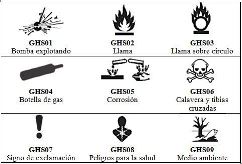Chemical risk analysis and ECHA-SGA approved use of disinfectants to fight COVID-19
DOI:
https://doi.org/10.13140/RG.2.2.25150.00328Keywords:
COVID-19, disinfectant, EPA, chemical risk, ECHA, GHSAbstract
On December 12, 2019 in Wuhan (People's Republic of China), 27 cases of viral pneumonia caused by a new pathogen known as COVID-19 are reported, subsequently, the World Health Organization (WHO) confirms a public emergency of international importance and declares it as a pandemic on March 11, 2020. Due to its high infectivity rate, the Center for Disease Control and Prevention (CDC) recommends as preventive measures avoiding exposure, good hand hygiene and the use of disinfectants. The Environmental Protection Agency (EPA) has identified more than 500 effective disinfectants against the virus; however, CDC has documented increases in the admissions of patients in health centers with symptoms related to the use, handling, ignorance or high-risk practices of the disinfectants used to prevent transmission of the virus. Therefore, it is important to identify in the products recommended by EPA, the intrinsic risks of active chemical substances according to the European Chemicals Agency (ECHA) based on the Globally Harmonized System of Classification and Labeling of Chemicals (GHS), as a first step for good management in the practice of disinfection.
Downloads
References
A. Rodríguez , J. Sánchez, S. Hernández, C. Pérez, W. Villamil, C. Méndez, S. Verbanaz, S. Cimerman, H. Rodríguez, J. Escalera, G. Balbin, K. Arteaga, A. Cvetkovic, T. Orduna, E. Savio y A. Paniz. Preparación y control de la enfermedad por coronavirus 2019 (COVID-19) en América Latina, Acta Médica Peruana, 37(1): 3-7, 2020.
J. Salinas, C. Gallegos, J. Villagómez y L. Zúñiga. Características clínicas, diagnóstico y tratamiento por infección SARS-Cov-2, Journal of American Health, pp. 60-75, 2021. http://dx.doi.org/10.37958/jah.v0i0.75
J. León y E. Abad-Corpa. Desinfectantes y antisepticos frente al coronavirus: sintesis de evidencias y recomendaciones, Elsevier Public Health Emergency Collection, PMC7241393: 84-88, 2021.
Centers for Disease Control and Prevention. Emergency Preparedness and Response, HAN00434, 05-07-2020. https://emergency.cdc.gov/han/2020/han00434.asp
K. Eldeirawi, L. Huntington, S. Nyenhuis y B. Polivka. Increased disinfectant use among adults with asthma in the era of COVID-19, The Journal of Allergy and Clinical Inmunology, 9(3):1378-1380, 2021. https://www.sciencedirect.com/science/article/pii/S2213219820314021
N. Gonzales y L. Quinto. Implicancia sobre la salud de las personas ante exposición de amonio cuaternario durante la pandemis Covid-19 en mercados de Breña, Universidad Interamericana, Lima, 2020. http://repositorio.unid.edu.pe/handle/unid/106
A. García y M. Uribe, Limpieza y desinfección de superficies, Cali: Sena , 2005.
European Chemicals Agency, Identificación de la sustancia, 2021. https://echa.europa.eu/es/regulations/reach/substance-identity
United States Environmental Protection Agency, Coronavirus, 2020. https://www.epa.gov/coronavirus/about-list-n-disinfectants-coronavirus-covid-19-0
K. Azañedo, Conocimiento y prácticas en la prevención de riesgo químico en centro quirúrgico, Tesis para optar el título de especialista en enfermería. Universidad Nacional de Trujillo, Trujillo, 2020.
Sociedad Pública de Gestión Ambiental, Requerimientos e implicaciones del reglamento 1907/2006. Reglamento REACH, Bilbao: IHOBE, 2007.
Naciones Unidas, Sistema Globalmente Armonizado de Clasificación y Etiquetado de productos químicos, Naciones Unidas, 2013.
Globally Harmonized System of Classification and Labeling of Chemicals, GHS (Rev 5), 2013. http://www.unece.org/es/trans/danger/publi/ghs/ghs_rev05/05files_s.html

Published
How to Cite
Issue
Section
Copyright (c) 2021 Nigme Cadenas, Sasha Caripá

This work is licensed under a Creative Commons Attribution-NonCommercial-ShareAlike 4.0 International License.
The opinions expressed by the authors do not necessarily reflect the position of the publisher of the publication or of UCLA. The total or partial reproduction of the texts published here is authorized, as long as the complete source and the electronic address of this journal are cited.
The authors fully retain the rights to their works, giving the journal the right to be the first publication where the article is presented. The authors have the right to use their articles for any purpose as long as it is done for non-profit. Authors are recommended to disseminate their articles in the final version, after publication in this journal, in the electronic media of the institutions to which they are affiliated or personal digital media.


